We Finally Got to Drive Ford’s New GT Supercar, And Holy Crap
We’ll try to put the experience into words…

Ford announced that it would revive its storied GT model at the January 2015 North American International Auto Show in Detroit. The following June, the company announced that it would race the car in the next year’s 24 Hours of Le Mans endurance sports car race for the 50th anniversary of Ford’s 1-2-3 sweep of the podium with the GT40 race car.
In January of 2016, Ford unveiled the actual production version of the GT at the Detroit auto show, and at the end of the month the car made its competition debut at the 24 Hours of Daytona.
https://www.youtube.com/watch?v=io81PzoSc2E
Things didn’t go according to plan in that race, but Ford sorted out the car’s early issues with the transmission and scored a victory at the 12 Hours of Sebring before returning to Le Mans in June, where the new Ford GT was able to fulfill its intent by winning on the half-century anniversary of its forbears’ triumph over Ferrari in the 1966 race.
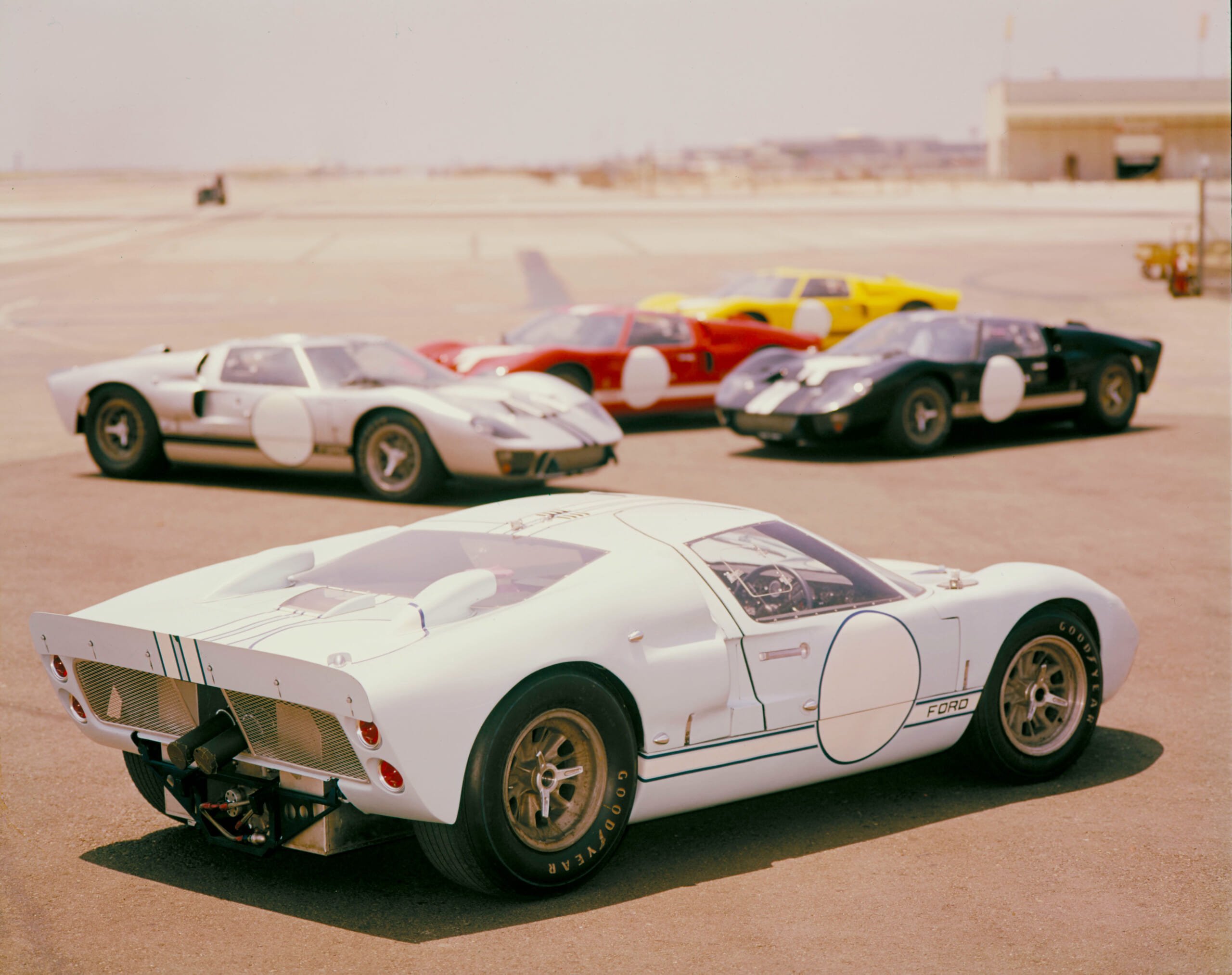
Now, after all that time, Ford is finally delivering cars for customers and has let journalists drive the new 2017 Ford GT for the first time, and we can report that the car is every bit as incredible as its low-slung, race-ready appearance would suggest.
That is for a good reason. The Ford GT isn’t just a sports car that races at Le Mans. It’s entire reason for existence is to win Le Mans, and it was built with consideration of legal requirements to let Ford sell this pure race car for street use.
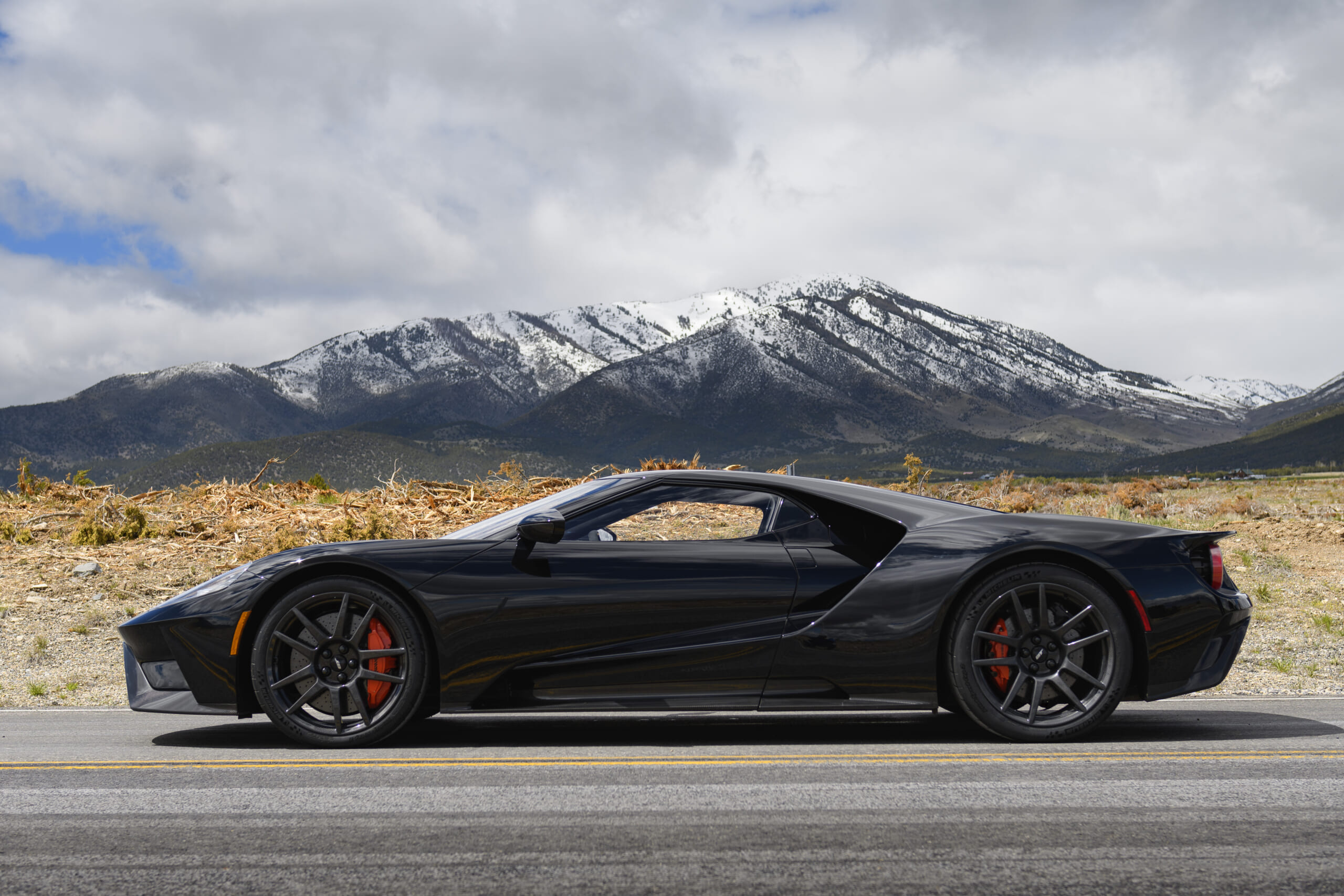
The scissor doors flip dramatically upward in the manner of a McLaren, providing an immediate cue that this is no hot rodded Mustang. The roof is insanely low and the door opening leads to an on-the-ground seat like that of the go-carts you’ve driven at the track.
The low roof is a hallmark of the car. Its progenitor GT40 got the numerical part of its name from the roof’s height: 40 inches. In this case, the roof towers at 43.7 inches, which proves to still be very low.

Looking at its would-be competitor at Le Mans, Ford initially planned to build a souped-up Mustang to race against the Ferrari 458. But a simply overlay of their silhouettes showed that the Mustang punches an insurmountably huger hole in the air than the Ferrari. Plan B was to build a proper race car, from scratch.
As a result, the GT has a lower roof than the Ferrari, helping it cheat the wind on the Mulsanne Straight at Le Mans at its 216 mph top speed.
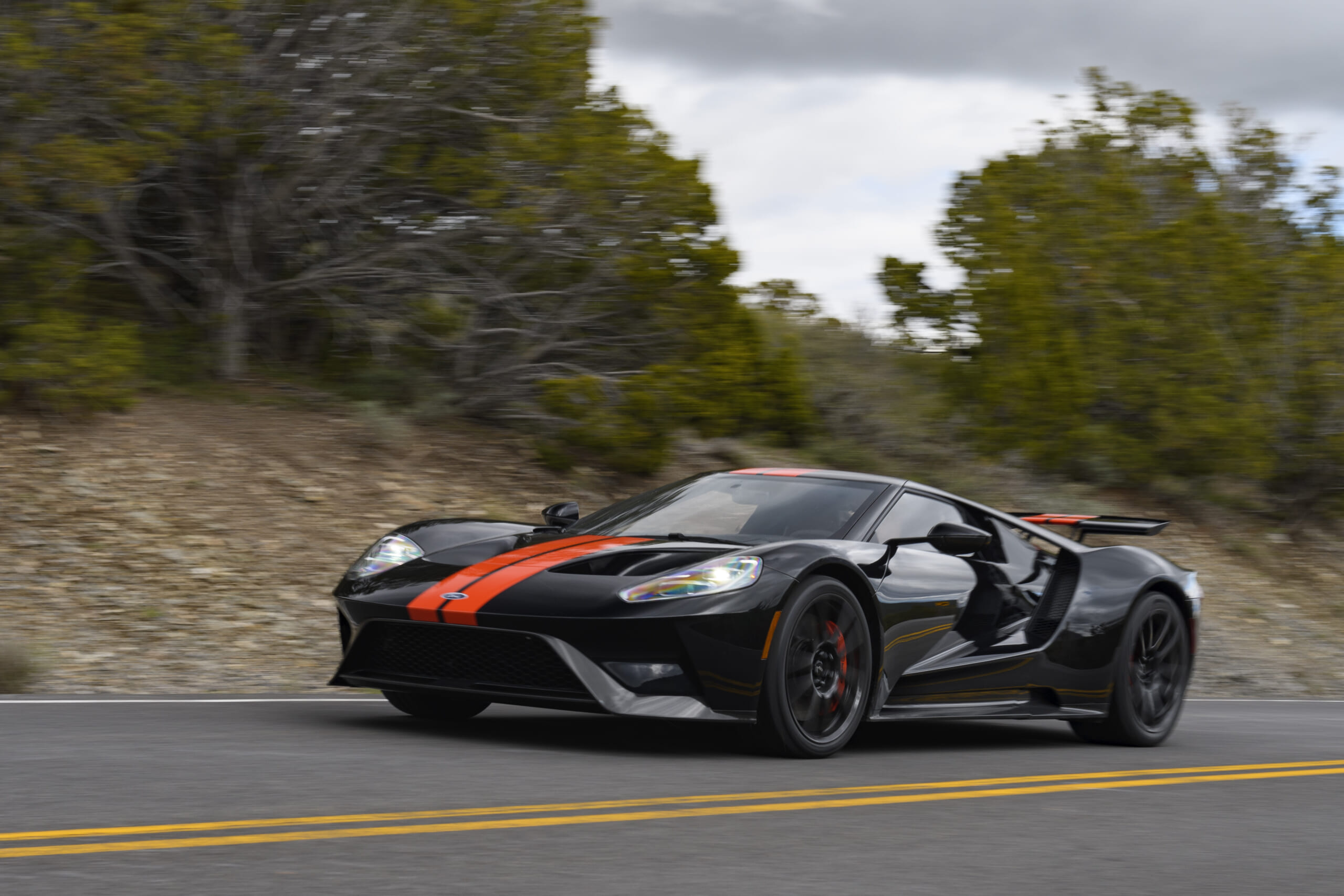
“Aero was really key for us,” explained director of design Chris Svensson, who we interviewed previously for our earlier feature on the GT’s design. “It drove the performance of the car. Our primary goal was to win Le Mans.”
Not to sell cars, look sharp or beat the Corvette in some metric. Win Le Mans.
That go-cart seat is flat on the floor and all the way back against the cabin’s rear bulkhead. It doesn’t move, keeping the driver’s weight as low and rearward as possible. The pedals and steering wheel come to you, adjusting for your height.
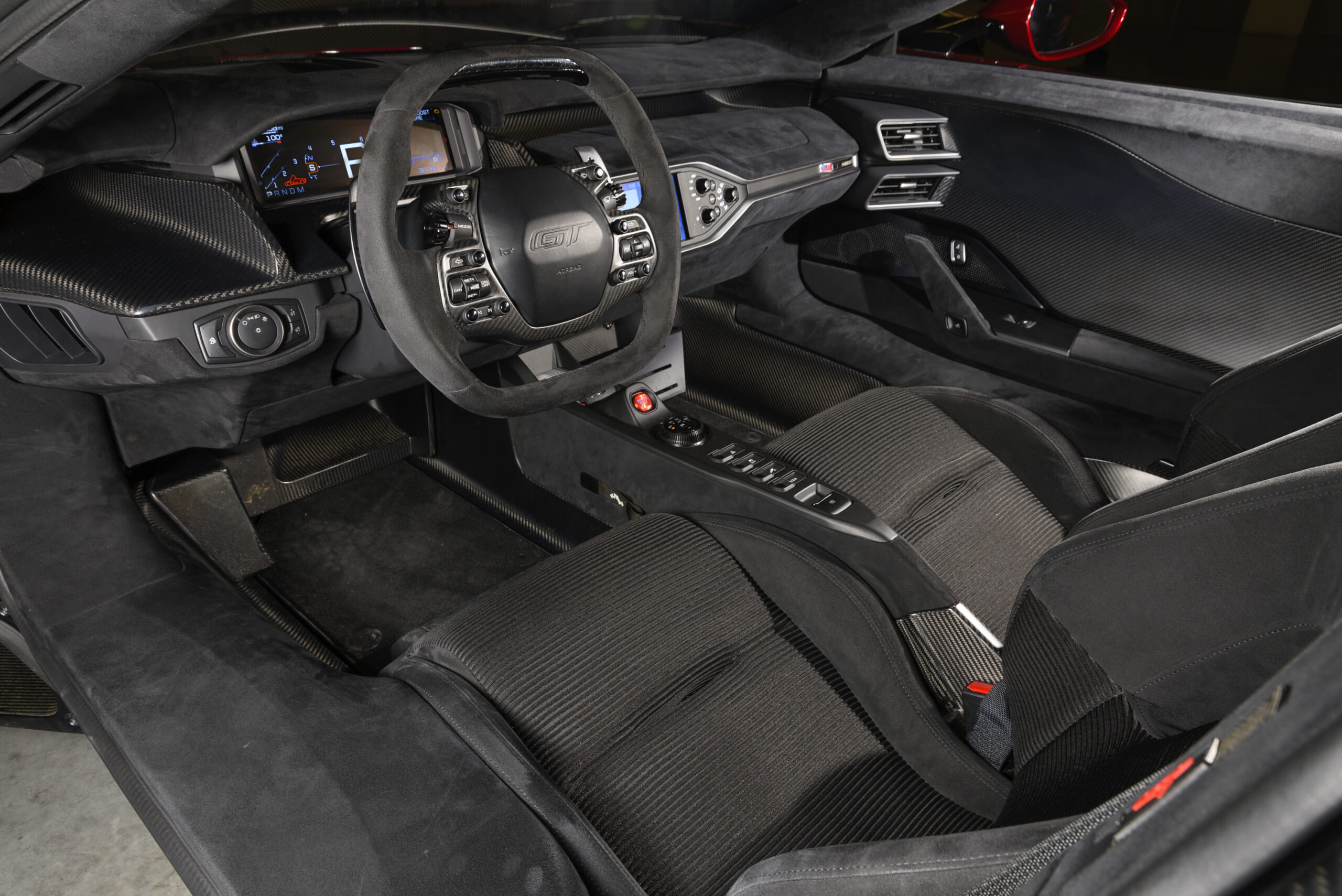
Look leftward for your passenger and you might be startled because they are right there. Occupants ride shoulder-to-shoulder in the manner of the diminutive Lotus Elise.
This is because every single bit of the GT’s bodywork is shrink-wrapped tightly over the required mechanical components and juuust enough space for two people to sit. As with the roof height, this minimizes the width of the windshield to reduce drag.
Despite its low height and narrow width, the GT’s windshield is huge, stretching out ahead for miles because it lies seemingly flat. It creates a bit of a disorienting effect at first, sort of like looking through someone else’s glasses, but you get used to it.

There isn’t much visibility out the back, but the outside mirrors show the roof’s flying buttresses arching gracefully over objects behind.
Press the Start button and the GT’s 647 horses rumble to life. The 3.5-liter EcoBoost twin-turbo V6 is a version of the engine we met previously in our F-150 Raptor drive earlier this year.
You’ll hear few paeans to the lyrical music of a twin-turbocharged V6 engine, and there is good reason for this. The V6 layout just doesn’t lend itself to producing the seductive soundtrack created by a V12 or a V8 engine and stuffing its exhaust pipes with turbocharger turbines exacerbates this shortcoming.
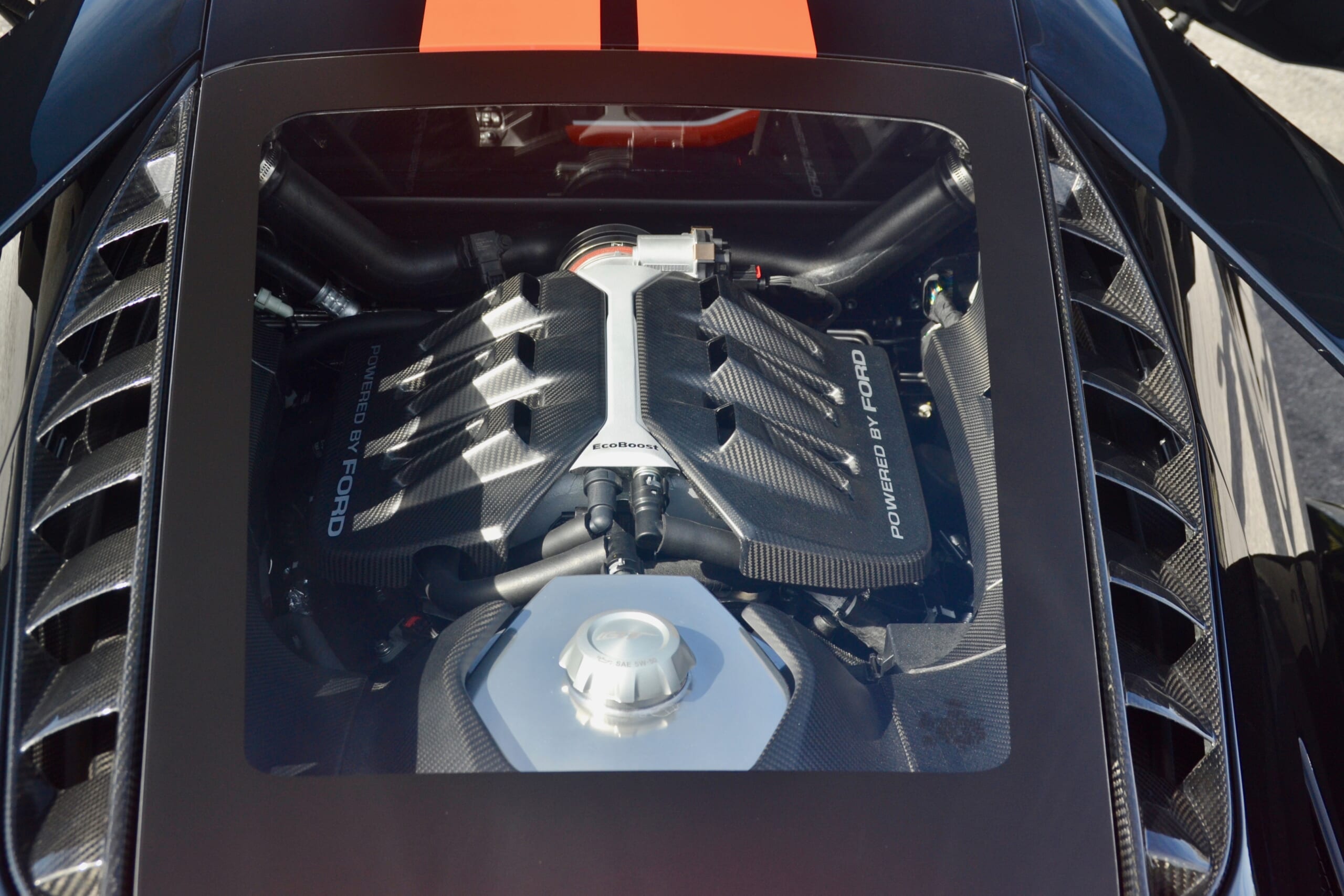
Ford’s engineers have managed to muster a purposeful sound from it, along the lines of the Nissan GT-R, but without any of the noticeable turbocharger whistles, pops and whines of that car.
Press the “D” button on the car’s unfortunate push-button shifter (I hate the things because they take longer to use in a hurry than a shift lever and the position selected isn’t inherently visible) and the Getrag 7-speed dual-clutch racing transmission clicks into gear.
You can leave it in automatic mode, which seems well-programmed so there’s little need for intervention, or you can squeeze the car’s steering wheel-mounted shift paddles.
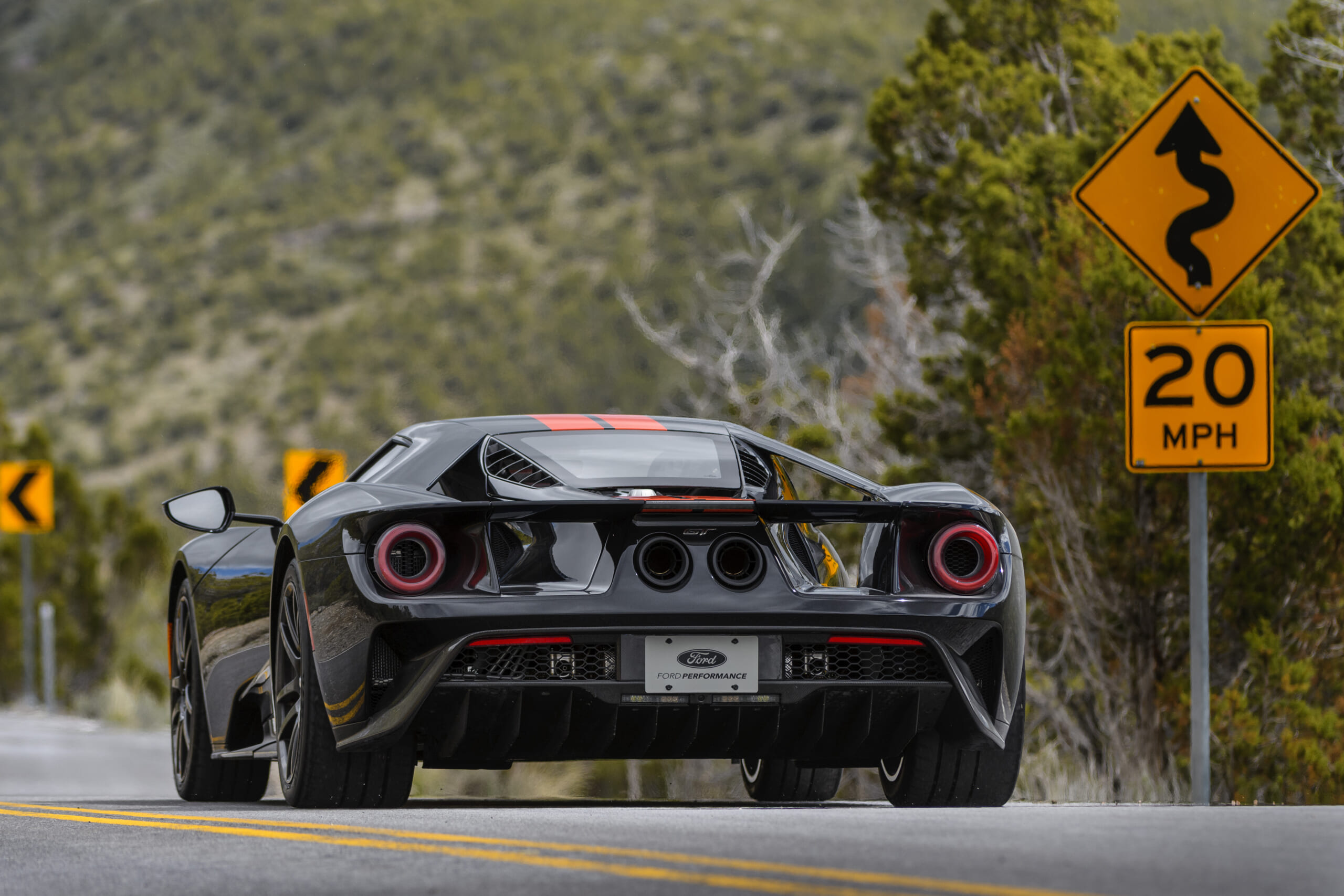
Attacking the mountain roads outside Salt Lake City while driving in Sport mode, the GT conveys maximum confidence to the driver, with strong acceleration, firm, responsive brakes and hydraulic power steering that provides useful steering feel through corners.
As a race car converted for street use, there is nothing you can do legally on the street that remotely taxes the GT’s stupendous capabilities, aside from maybe practicing an anti-lock brake stopping test on an empty road. It stops. Quickly.
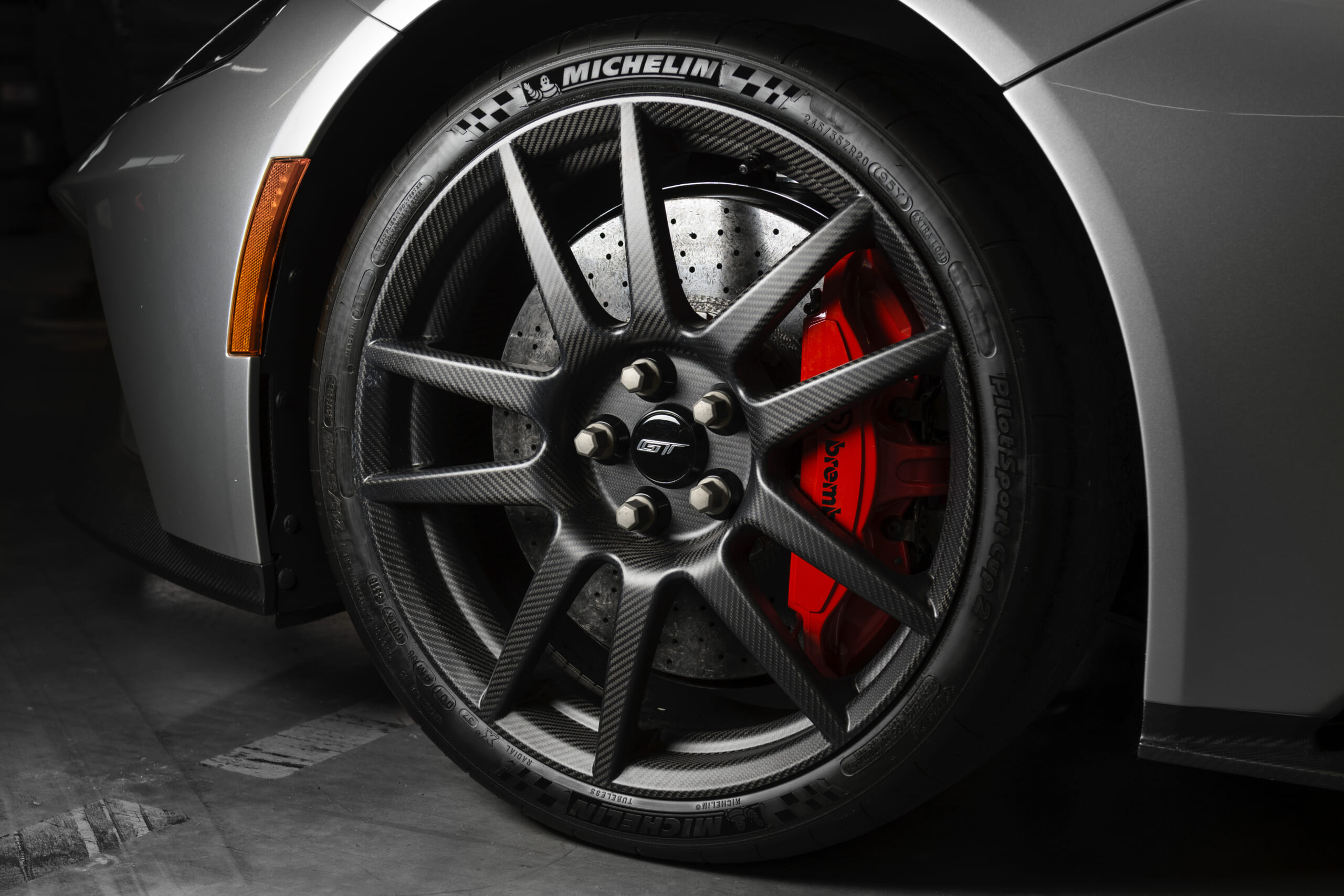
The GT uses racing-grade carbon fiber brakes, which is unsurprising considering its $450,000 price tag and its racing ambitions. However, these brakes are optimized for performance and usually no thought is given to the niceties of daily driving.
As a result, carbon brakes can be grabby at low speeds and they are prone to embarrassing squeals when stopping. The GT has none of these issues. The skeleton crew responsible for developing the GT farmed out the brake development to Ford’s brake experts, who made it a point of pride to refine even these tremendous track stoppers to the same requirements met by Ford’s regular models.
Utah Motorsports Park is a more appropriate venue for exercising the GT, and there it continued to confirm its racetrack lineage.
A switch from Sport mode to Track mode sees the car drop down lower onto its race springs, bypassing the cushier street springs that provide extra clearance for the bumps encountered in real life driving.
From this altitude, on its race springs and using its innovative Multimatic Dynamic Suspension Spool Valve shocks (first seen on the Chevrolet Camaro Z/28 and coming soon on the Chevrolet Colorado ZR2 off-road truck) the GT remains perfectly flat and composed at all times.
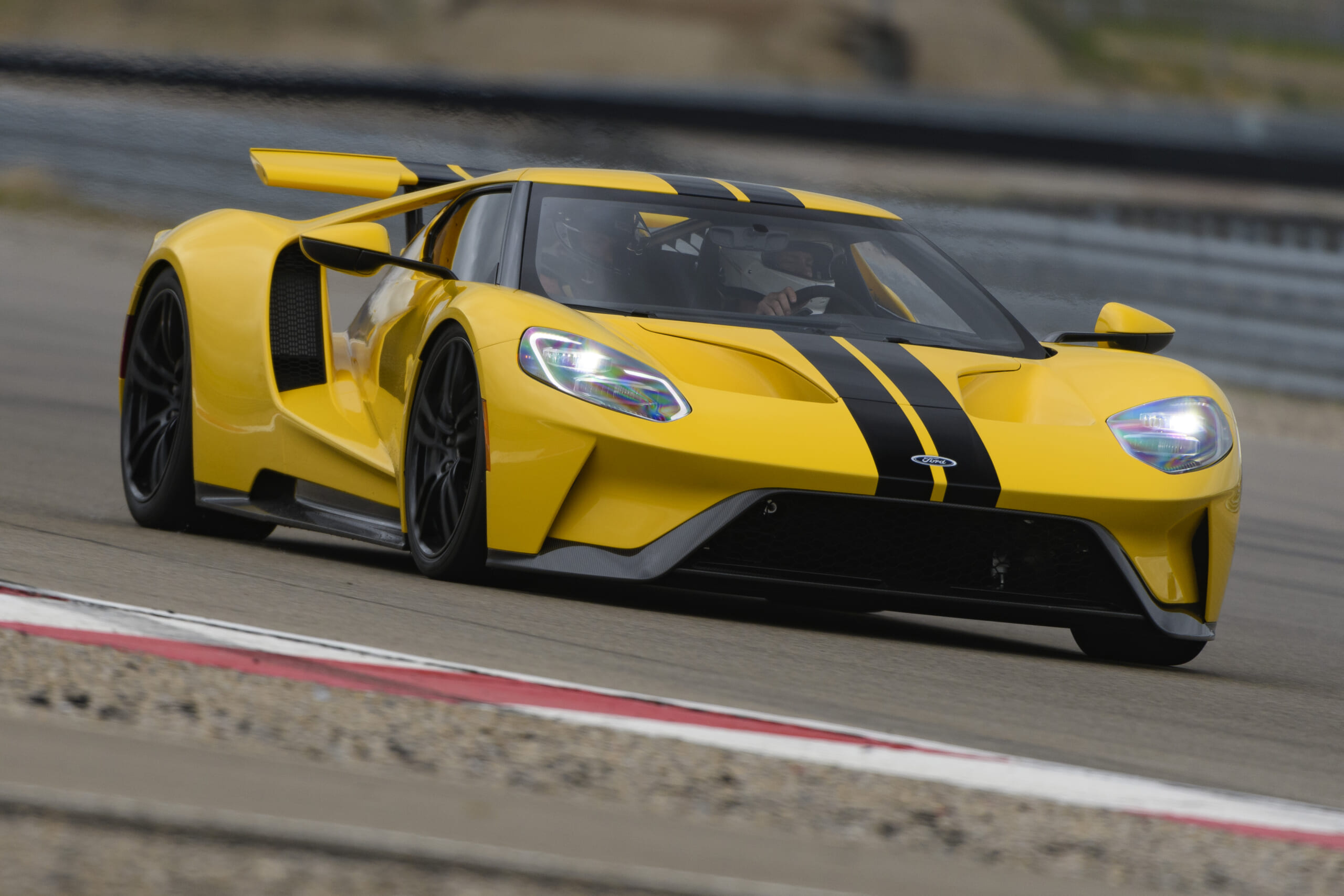
Brake dive is barely discernible, and the car doesn’t seem to roll into turns at all, thanks to its superlative suspension. Accelerating out of turns, with the car’s weight shifted to the outside rear wheel and the tires scrambling for grip, even prestigious sports cars can suffer a bit of wallow as the shocks struggle to contain all the forces at work, but the GT is placidly calm and confidence inspiring.
This even keel isn’t just good for drivers’ nerves, it is also critical for that all-important aerodynamic aspect, because a car that is moving around on its suspension changes the downforce it is creating, so the available grip also changes.
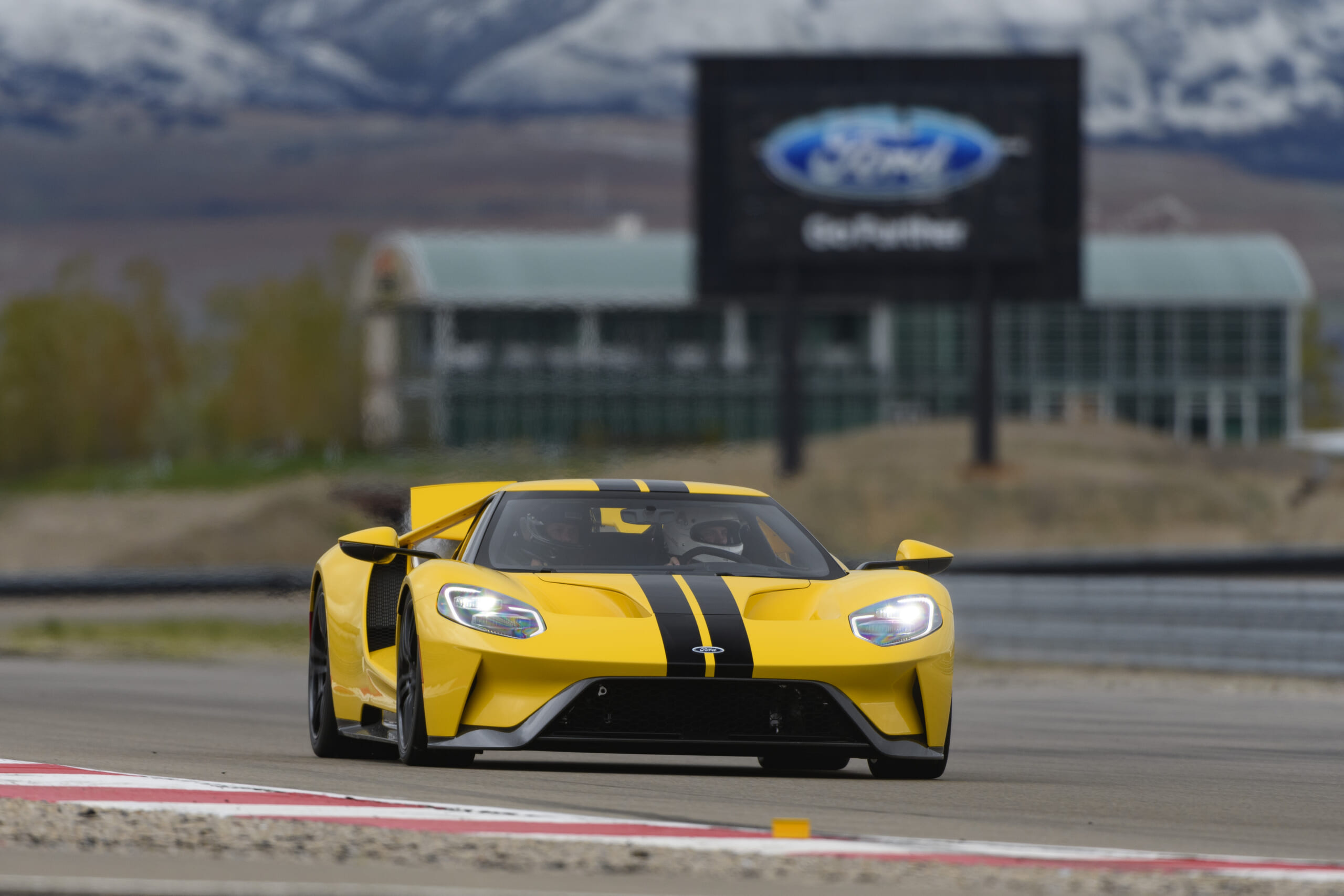
As a mid-engine design, the GT has perfect balance in corners and the car shows impressive ability to neither slide the front tires on corner entry nor the rears while rocketing out of turns.
Response to shifts on the paddles is instant, with the computer automatically matching the EcoBoost’s revs on downshifts, providing the audible proof of the driver’s prowess, even if it is the computer doing the work.
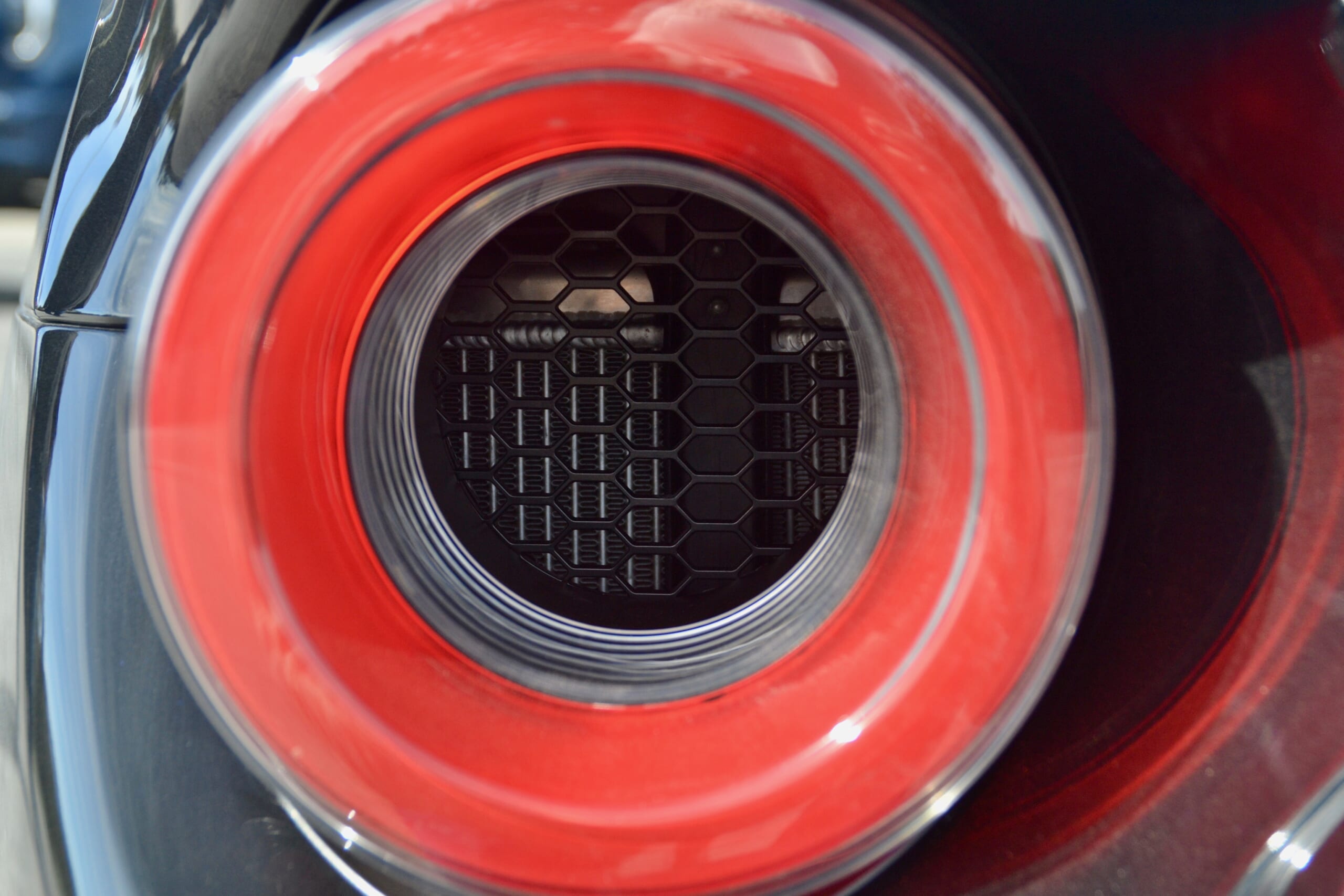
By now, you’re surely convinced. You’re ready to head to the Ford dealer and slap down your money. Even though you know that the price is $450,000 and this will require you to sell your house first.
Your house is safe, because there is so much demand for the GT, that the company had to invite applications for the first 250 cars to be built in 2017 and another 250 next year. Ford has committed to 500 more cars in 2018-19, but those will be equally difficult to come by.

Even our day behind the wheel was bittersweet, knowing that its was likely the first, last and only shot at driving this amazing ride. Such exclusivity only builds legends like the GT’s.
